Welcome to a record of the presentations made to our chapter. Presenting our history and philosophy is a growing process. Each link will take you to the overview of that speaker.
Beginning in October, 2021, the speaker’s introduction will contain the direct YouTube link when one is available. Otherwise there is a note of who spoke and handout links if available.
2024 Chapter Presentations
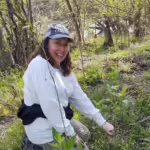 4/2024: No More Monoculure Lawns. Kathy Saucier beckons us to replace a monoculture lawn with a variety of native plants to make your property – large or small – come alive with birds and pollinators while freeing your maintenance time. Plant handout available.
4/2024: No More Monoculure Lawns. Kathy Saucier beckons us to replace a monoculture lawn with a variety of native plants to make your property – large or small – come alive with birds and pollinators while freeing your maintenance time. Plant handout available.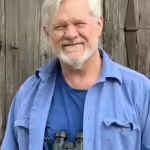 ardship for Birds Rufus Stephens, award-winning wildlife biologist, assists landowners and communities that are interested in managing for a diversity of wildlife with a special emphasis on birds. The continued focus on habitat improvement benefits birds on properties of all sizes in Central Texas.
ardship for Birds Rufus Stephens, award-winning wildlife biologist, assists landowners and communities that are interested in managing for a diversity of wildlife with a special emphasis on birds. The continued focus on habitat improvement benefits birds on properties of all sizes in Central Texas.
07/23/2024: Creating a Po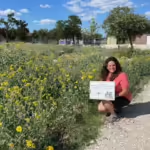 llinator Garden Step-by-Step If you want to create a pollinator garden, but don’t know where to start, Holly Simonette discusses how she and her husband, Paul created a beautiful pollinator garden/picnic area out of the destruction from Winter Storm Uri.
llinator Garden Step-by-Step If you want to create a pollinator garden, but don’t know where to start, Holly Simonette discusses how she and her husband, Paul created a beautiful pollinator garden/picnic area out of the destruction from Winter Storm Uri.
06/25/2024: Gardening to Attract Wildlife. Butterflies on your flowers. Birdsong dancing in the air. If you en joy having wildlife in your garden, Deborah Simmons, President of NPOST Fredericksburg Chapter, gives advice about the creation of a garden oasis graced by the presence of wildlife.
joy having wildlife in your garden, Deborah Simmons, President of NPOST Fredericksburg Chapter, gives advice about the creation of a garden oasis graced by the presence of wildlife.
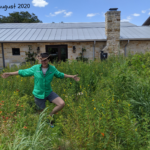 05/28/2024: Native Plants That Help Soak Up the Rain. “Rain gardens and native plant landscapes have different growing habits and care needs than traditional plants and lawns, and it’s important to plant the right natives so they’ll thrive and require less work.” Shannon Brown, founder of Ecosystem Regeneration Artisans (ERA) Landscapes.
05/28/2024: Native Plants That Help Soak Up the Rain. “Rain gardens and native plant landscapes have different growing habits and care needs than traditional plants and lawns, and it’s important to plant the right natives so they’ll thrive and require less work.” Shannon Brown, founder of Ecosystem Regeneration Artisans (ERA) Landscapes.
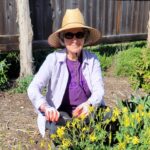 04/23/2024 “Get Real” Garden Design with Native Plants: “I’ll show you practical ways to build gardens that will enhance your property and be less work as time goes by,” noted Paula Stone, gardener extraordinaire and past president of the chapter. “I once heard someone say that, ‘The gardening should get easier as the gardener gets older.’”
04/23/2024 “Get Real” Garden Design with Native Plants: “I’ll show you practical ways to build gardens that will enhance your property and be less work as time goes by,” noted Paula Stone, gardener extraordinaire and past president of the chapter. “I once heard someone say that, ‘The gardening should get easier as the gardener gets older.’”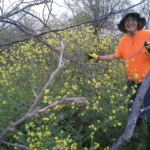 ve Plants and How to Get Rid of Them Cheryl Hamilton shares her extensive knowledge about non-native, invasive plants and how to eradicate them. View on the Fredericksburg Texas Native Gardening YouTube channel.
ve Plants and How to Get Rid of Them Cheryl Hamilton shares her extensive knowledge about non-native, invasive plants and how to eradicate them. View on the Fredericksburg Texas Native Gardening YouTube channel.02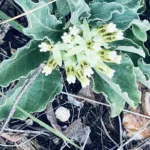 /27/2024: “Native Seed Selection and Planting Tips” George Cates, land management consultant for Native American Seed, joined us February 27 to explore the native plants, grasses and ecosystem of the Edwards Plateau. He spreads a realistic challenge to new land stewards to restore the viable native habitat across Texas. By selective observation we tie into the geography and microclimate of our own property to understand what will thrive.
/27/2024: “Native Seed Selection and Planting Tips” George Cates, land management consultant for Native American Seed, joined us February 27 to explore the native plants, grasses and ecosystem of the Edwards Plateau. He spreads a realistic challenge to new land stewards to restore the viable native habitat across Texas. By selective observation we tie into the geography and microclimate of our own property to understand what will thrive.
01/23/2024 Where is the Understory? Robert Edmonson, Texas A&M Forest Service biologist, discusses what happened to the native understory vegetation in the Texas Hill Country. He shows which plants are missing and most suitable for reintroduction into home landscapes. No video for this presentation is available due to technical difficulties.
2023 Chapter Presentations
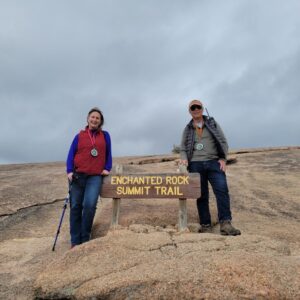
Enchanted Rock ~ 02.28.2023
Eighteen miles north of Fredericksburg the tip of a pink granite batholith, – 1.1 billion years old – rises above the much younger limestone layers of the Edwards Plateau.Enchanted Rock
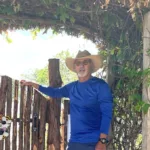 10.24.2023 Explore the Fredericksburg Nature Center with Lonnie Childs. There is no Zoom recording of this presentation. This is a partial recording from a cell phone, but still a valuable introduction.
10.24.2023 Explore the Fredericksburg Nature Center with Lonnie Childs. There is no Zoom recording of this presentation. This is a partial recording from a cell phone, but still a valuable introduction.
 09.26.2023 Peggy Sechrist shares key soil health principles that have been emerging in the field of soil science for the last 10 years. What’s Happening to Our Cycle? ”This is an ideal subject for our drought stricken region.”
09.26.2023 Peggy Sechrist shares key soil health principles that have been emerging in the field of soil science for the last 10 years. What’s Happening to Our Cycle? ”This is an ideal subject for our drought stricken region.”
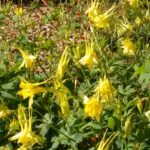 08.20.2023 Creating Woodland Habitat in Small Spaces presented by Deborah Simmons. “We are most successful when we plant native plants in the micro-habitats for which they are adapted – in groupings similar to what Nature arranges on her own.” To make the space inviting to creatures, the vegetation must be sufficiently thick that you cannot see through it. A 12’x12’ square is about as small as you can successfully go; so a small yard is sufficient to mimic a rich woodland habitat.
08.20.2023 Creating Woodland Habitat in Small Spaces presented by Deborah Simmons. “We are most successful when we plant native plants in the micro-habitats for which they are adapted – in groupings similar to what Nature arranges on her own.” To make the space inviting to creatures, the vegetation must be sufficiently thick that you cannot see through it. A 12’x12’ square is about as small as you can successfully go; so a small yard is sufficient to mimic a rich woodland habitat.
07.25.2023 Deedy Wright,founding member of NPSOT New Braunfels and past President of the San Antonio Chapter, sh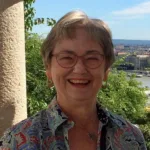 ares her wealth of knowledge about hill country native plants. Xeriscaping Your Yard
ares her wealth of knowledge about hill country native plants. Xeriscaping Your Yard
06.27.2023 Dawn Davies, Night Sky Program Manager for Hill Country Alliance, speaks about the importance of night sky preservation. On the Edge of Night.
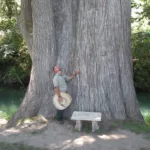 05.23.2023 Robert Edmonson, How to plant and care for trees.
05.23.2023 Robert Edmonson, How to plant and care for trees.
 04.27.2023 Paula Stone offers a practical discussion of: plans, tools, clothing, weeds, garden prep, planting, plants, and maintenance. Recording not available.
04.27.2023 Paula Stone offers a practical discussion of: plans, tools, clothing, weeds, garden prep, planting, plants, and maintenance. Recording not available.
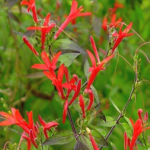 03.28.2023 Plant whisperers Kathy Lewis and Kathy Saucier speak about growing and propagating native plants. Both are members of Fredericksburg NPSOT. slide show and notes available
03.28.2023 Plant whisperers Kathy Lewis and Kathy Saucier speak about growing and propagating native plants. Both are members of Fredericksburg NPSOT. slide show and notes available
02.28.2023 Enchanted Rock. See post above.
1.24.2023 Diana Wilson, focuses on the Fibonacci sequence. – a mathematical pattern that occurs throughout nature – including native plants.
2022 Chapter Presentations
10.25.2022 Rare & Endangered Plants by Michael Eason, Associate Director of Conservation and Collections, San Antonio Botanical Garden. Endangered plants of the Chihuahua Desert were highlighted. A great presentation that is unavailable due to bad sound recording
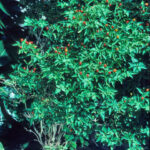
09.27.2022 Edible & Medicinal Plants with Kim Ort
Chili Petin
08.23.2022 Craig Hensley , Using INaturalist for Scien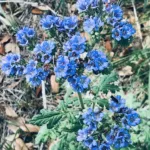 ce, Learning and Fun, too. Learn how to use iNaturalist to explore and identify the world around us.
ce, Learning and Fun, too. Learn how to use iNaturalist to explore and identify the world around us.
07.26.2022 Robert Edmonson, Texas A&M Forest Service Biologist , returned to talk about his favorite subject:Trees. ‘What is Going On with My Trees?’ Unfortunately there is no video of this presentation. Instead, he spoke extensively from 35 years experience to describe how trees grow and what challenges they face in today’s climate. Information providing growing conditions for trees native to Gillespie County are located here.
06.28.2022 Dinah Zike”s STEAM Garden, Native Plants, and Recycling: Oh, My ! introduces us to her Comfort TX garden and the educational philosophy of STEAM. “Science, Technology, Engineering, Arts, & Science. Technical difficulties. No video available.
Taylor Collins of ROAM Ranch near Fredericksburg, introduces a vision of building and operating a multi species regenerative ecosystem in which soil building practices are integrated into every aspect of land management in this month’s topic: “Restoring Functional Ecosystems with Regenerative Agriculture”. 05.24.2022
Sue Blackwell, our speaker for April, is particularly fascinated with pollination and the intricacy of the social structure in a honeybee colony. She speaks on the importance of honeybees in our environment. 04.26.2022
Karen Taylor, led the presentation and discussion of “Going Green – Refusing Plastics”. Plastics area present part our Hill Country air and soil. The hand out Going Green includes the pertinent, practical and local resources to encourage us to “refuse” bringing plastics home in the first place. 03. 2022
Water is Life. Rainwater harvesting and watershed stewardship, the focus of the February 22 presentation, has been the essence of Billy Kniffen‘s 31 years as a Texas AgriLife Extension Service Water Resource Specialist. Practical experience was gained on his own home in Menard, Texas. 02.22.2022
Sustainable Soil brought to life by David Vaughn, ISA certified arborist. “Soil is more than sand, silt, and clay with some small amount of organic matter.” 01.25.2022
2021 Chapter Presentations
The COVID19 pandemic disruption continued through March of 2021. But life is returning.
Daniel Oppenheimer & Elizabeth McGreevy: in a dual presentation Daniel and Elizabeth address the drama of the Ashe Juniper: Hill Country Cedars, History, Myths and Upland Stewardship. Elizabeth McGreevy is author of Wanted: Mountain Cedars, Dead and Alive. 11.23.2021
Beth McMahon, the Horticulture County Extension Agent for Texas A&M Agrilife Extension Service for Gillespie Country, leads us through Propagating and Seed Collecting from Native Plants 10.26.2021
Using I-Naturalist, Sheryl Smith-Rodgers explores and identifies the tiny things in her surroundings as well as the obvious. From Trash to Treasure follows the rescue of an unidentified native plant in a construction zone to the ultimate discovery that it was an unknown plant that now has a name: Edwards Plateau crestrib morning glory (Ipomoea edwardsensis) 09.28.2021
Sharon Hixon, a member of both the Kerrville and Fredericksburg chapters of NPSOT, has been observing, absorbing, and sharing the native ecosystem since 2008. She describes herself as a generalist, we could call her a mentor. Sharon’s topic, Flowering Trees and Shrubs for the Texas Hill Country, leads all of us into the planning stages for autumn’s cooler planting season. 08.24.2021
Rufus Stephens, a Certified Wildlife Biologist and Coauthor of Attracting Birds in the Texas Hill Country: a Guide to Land Stewardship, addresses land management with a special emphasis on birds . 07.27.2021
Shannon Brown, founded Ecosystem Regeneration Artisans to create a team that focuses on earth care and people care. Native plants provide wildlife habitat for pollinators and birds within her gardens and often involve mechanisms to harvest rainwater, capturing it into the soil before it runs off, becomes polluted, and contributes to flooding. 06.22.2021 Bio & video link.
Hillside Stewardship Zoom meeting with Daniel Oppenheimer, Land Program Manager for the Hill Country Alliance: A key component is to stop erosion. One method – the media luna, a semi-circular construction that cut across the drainage field to slow the water sufficiently to allow the water to soak into the soil. Hillside Stewardship Part 1
Hillside Stewardship Part 2B 05.25.2021
Katherine Tanner of Hat & Heart Farm is the “heart” of a Fredericksburg farm that believes in organic, sustainable farming practices that build the soil for the future. With that topic in mind, Katherine is our speaker for our first chapter Zoom meeting. Although this Zoom meeting was publicized, it was not taped. 04.27.2021
2020 Chapter Presentations
Beginning in March, 2020 through the end of the year, the Fredericksburg chapter of the Native Plant Society has not had an in-person meeting. You can get a sense of the movement of the chapter through the board meeting minutes. Instead our president, Paula Stone, instituted a weekly newsletter and created garden videos from the top area gardeners to keep us all together and working toward our common love of the environment. The weekly newsletters can be accessed here.
Jeopardy question for $1000: the shrubs, subshrubs and grasses under trees. Answer?
Robert Edmonson, Biologist IV with Texas A&M Forest Service, describes the understory and its importance. 2020.2.24 FBG Chapter Meeting
The Story of Wild Seed Farms: A Leader in the Restoration of Native Wildflowers . John R. Thomas, is our opening speaker for 2020 season of the Fredericksburg chapter of the Native Plant Society of Texas 1.28.2020 Fbg Chapter Meeting
2019 Chapter Presentations
Madrone Lore and More: How to Plant a Madrone Tree. Join David Winningham through an eight-year long journey of learning how to cultivate Madrones. These hardy beautiful trees are members of a large madrone family, but only the Ericaceae Arbutus xalapensisis, is the beautiful native to the Texas Hill Country and Trans-Pecos.10.22.2019 Chapter meeting
Butterflies NOT named “Monarch” The Hill Country’s Other Scale-Winged Wonders Join Texas Parks & Wildlife Department’s “Texas Nature Trackers” Biologist, Craig Hensley, for an introduction to the rich diversity of butterflies that call the Texas Hill Country home. 9.24.19 Chapter Meeting
iNaturalist. An introduction to the citizen scientist website by Kelly Bender Simon, Texas Parks and Wildlife 8.27.19 FBG CHAPTER MEETING
Seed Balls: Hands-on party begin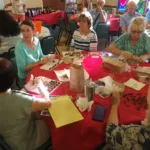 ning with ice cream sundaes and then making seed balls with Zenobia
ning with ice cream sundaes and then making seed balls with Zenobia
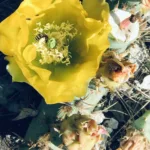
Texas Bumble Bees . . .What’s the Buzz? Dr. Jessica Beckham introduces us to our Lone Star bees; those that co-evolved with special adaptations to pollinate our own Texas native plants. 06.25.2019 Chapter Meeting.
“Rainscaping – The Next Generation of WaterWise Landscaping” Shannon Brown designs native plant gardens and landscapes that not only conserve water during dry spells, but mitigate flooding during downpours. 05.28.19 Chapter Meeting
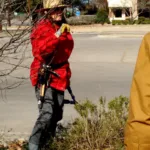
“18 Years of Native Plant Gardening Kathy Lyles condenses gardening advice from the experiments of the last 18 years observing and working with native plants. Read some of her tips in the minutes. 04.23.2019 FBG Chapter Meeting
“What is Real Land Stewardship?” Steve Nelle is one of Texas’ foremost experts in range and riparian conservation. 03.26.19 Chapter Meeting Minutes.03.26.19 CHAPTER MEETING
“How to Drought Proof Texas” Pete VanDyke demonstrates methods to capture rainfall and eliminate erosion. 02.26.19 Chapter Meeting
“Seasons at Selah: The legacy of Bamberger Ranch Preserve.” David Bamberger , photographer David K. Langford and long friend Andrew Sansom introduce us to Selah and discuss the Preserve’s significance to conservation and what it means for Texas. 01.22.2019 FBG chapter meeting



